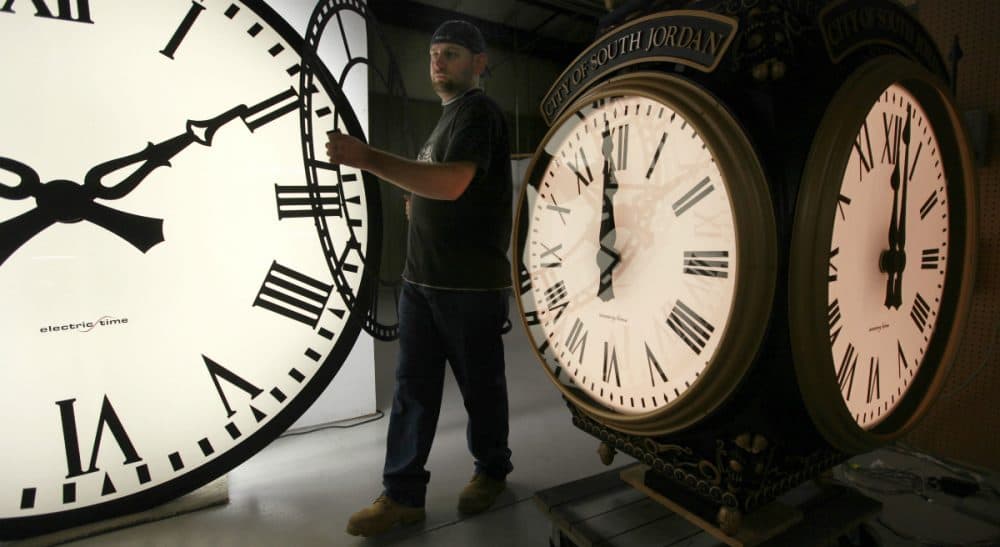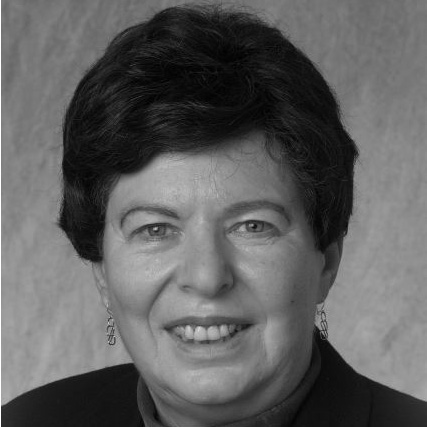Advertisement
Let’s Not Fall Back: Should Massachusetts Ditch Its Time Zone?

Standard Time is coming back.
At 2 a.m. on Sunday, Nov. 1, clocks will be set back an hour all over the U.S. except in Arizona and Hawaii, which don’t use Daylight Saving Time (DST) at all.
And most of us in New England, at the eastern end of the Eastern Time Zone, will be unhappy. We’re hit particularly hard by the November switch. It gets dark here earlier than anywhere in the time zone. The sun sets a full 50 minutes earlier in Boston than in Washington, D.C. But, at present, federal law says we’re stuck with Standard Time.
We’re hit particularly hard by the November switch. It gets dark here earlier than anywhere in the time zone.
The Uniform Time Act of 1966, as modified in 1986 and 2005, mandates that all states adopt Daylight Saving Time (DST) between the second Sunday in March and the first Sunday in November unless they vote to exempt themselves. There is no provision for staying on DST year-round, although it’s obviously a popular idea since every change in the law has provided for more days of it. “In addition to the benefits of energy savings, fewer traffic fatalities, more recreation time and increased economic activity, Daylight Saving Time helps clear away the winter blues a little earlier,” Massachusetts U.S. Sen. Edward Markey, co-sponsor of both modifications, was quoted as saying in The Bangor Daily News.
Year-round DST was briefly implemented in 1974 in response to the oil embargo. The 2005 modification, which moved the end date for DST from October to November, was motivated partly by a desire for more daylight for trick-or-treaters. But no one seems to want to make the leap to allowing year-round DST permanently.
States at the western end of time zones are rightly concerned about their children going to school in the dark. For them, there’s a provision for opting out of DST entirely, as Arizona and Hawaii did. Indiana, at the western border of the Eastern Time Zone, resisted DST for years, eventually giving up after some of its counties were allowed to move to Central Time. Michigan considered opting out this year.
Standard Time, in Massachusetts, means that children coming home from school at 4 p.m. can’t play outside. Babies, who can’t tell time, wake up with the sun an hour earlier. People leave work at 5 p.m. surrounded by darkness. If we commute by bicycle, a healthful and environmentally friendly habit, we’re in greater danger after dark even in clear weather. And every year we let ourselves in for an extra hour of that each day. Life here doesn’t start early enough in the morning to make a difference on the other end.
Standard Time has an especially adverse effect on people who have trouble driving after dark. Those who drive to and from work have to make difficult accommodations. And unless they’re among the fortunate few who have access to public transportation after evening rush hours, they’re excluded from evening social and educational activities, and trapped at home at the time of year when it’s most depressing to be confined. An extra hour can make a big difference in their lives.
The feds, ironically, have been in the time business only since the Standard Time Act of 1918, which authorized the Interstate Commerce Commission to define time zones for Standard and Daylight Saving Time. Before that, the U.S. operated unofficially on time zones established in 1883 for the railroads, which wanted to stop westbound trains operating on Cleveland time from colliding with eastbound trains using Detroit time. The DST component of the 1918 law was repealed in 1919. Between then and the 1966 law, except during World War II when DST was implemented year-round for three years, individual states and even cities decided whether to observe it. So Standard Time isn’t cast in concrete. Why not amend the statute one more time, allowing states to stay on DST?
Standard Time isn’t cast in concrete. Why not amend the statute one more time, allowing states to stay on Daylight Saving Time?
An alternative may be to move Massachusetts to Atlantic Time, the next time zone to the east. The Canadian Maritimes, Puerto Rico and the Virgin Islands are on Atlantic Time. In Maine, which extends farther east than we do, the idea was considered in the legislature in 2005. Once on Atlantic Time, we could opt out of DST if we didn’t want a difference in the spring and summer. Such requests need only be approved by the Department of Transportation.
Charles Dudley Warner said, “Everybody complains about the weather, but nobody does anything about it.” Everybody in Massachusetts complains about Standard Time. In this case we can do something.
